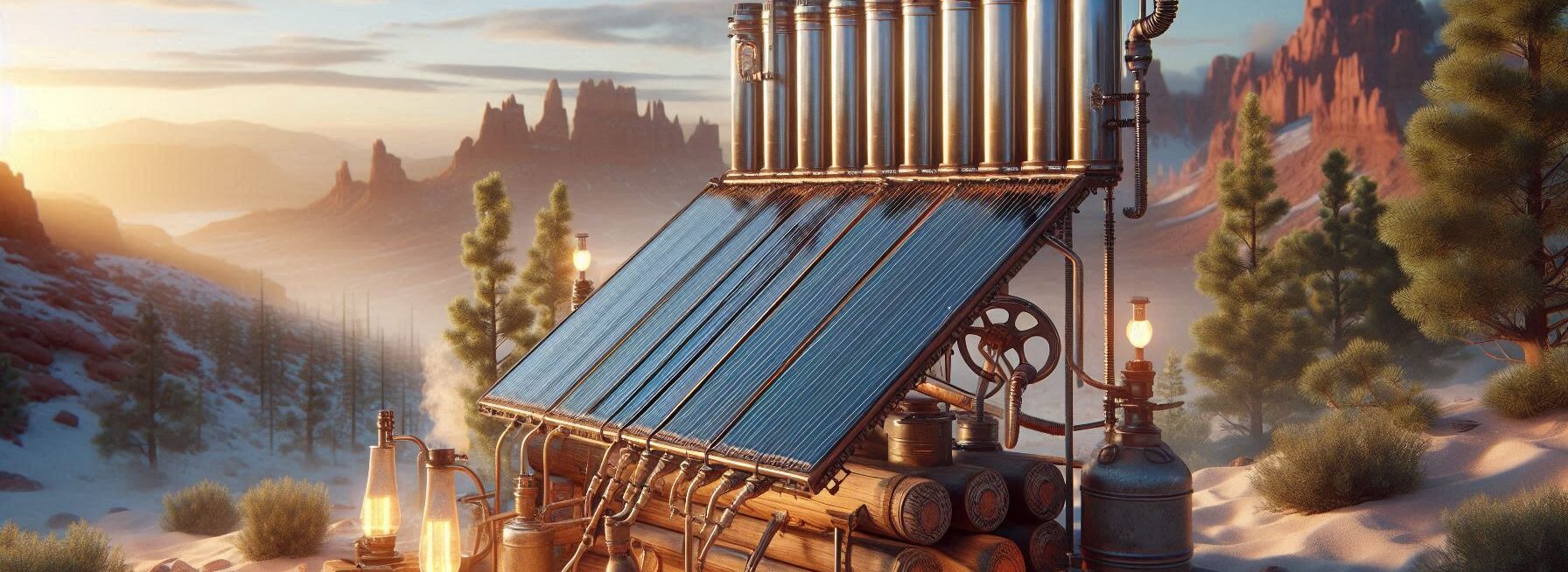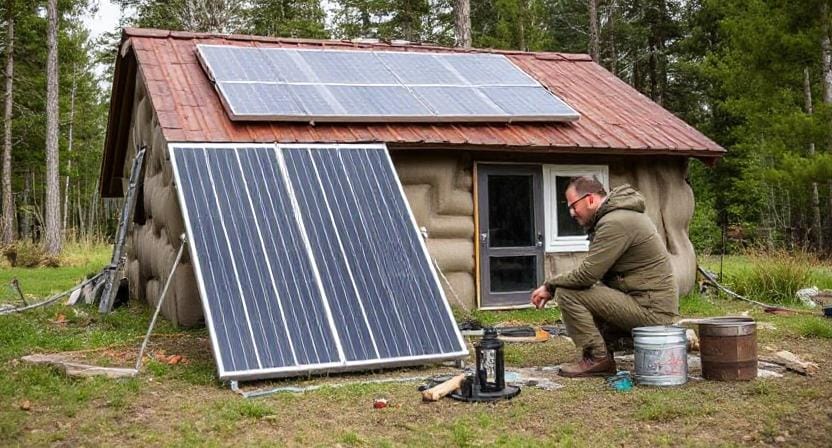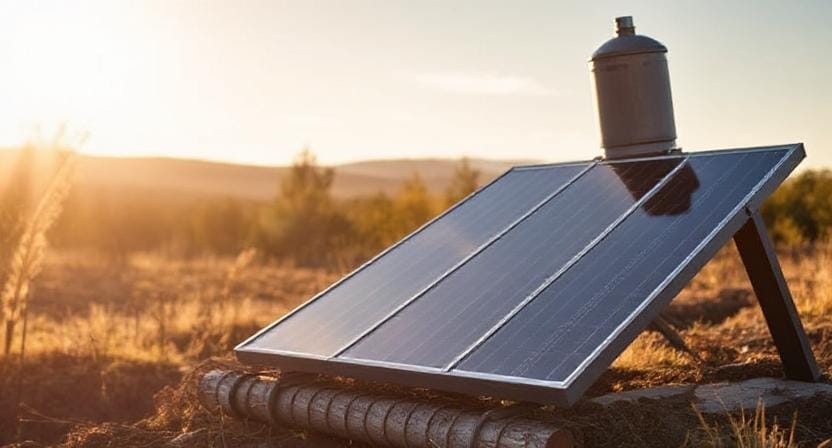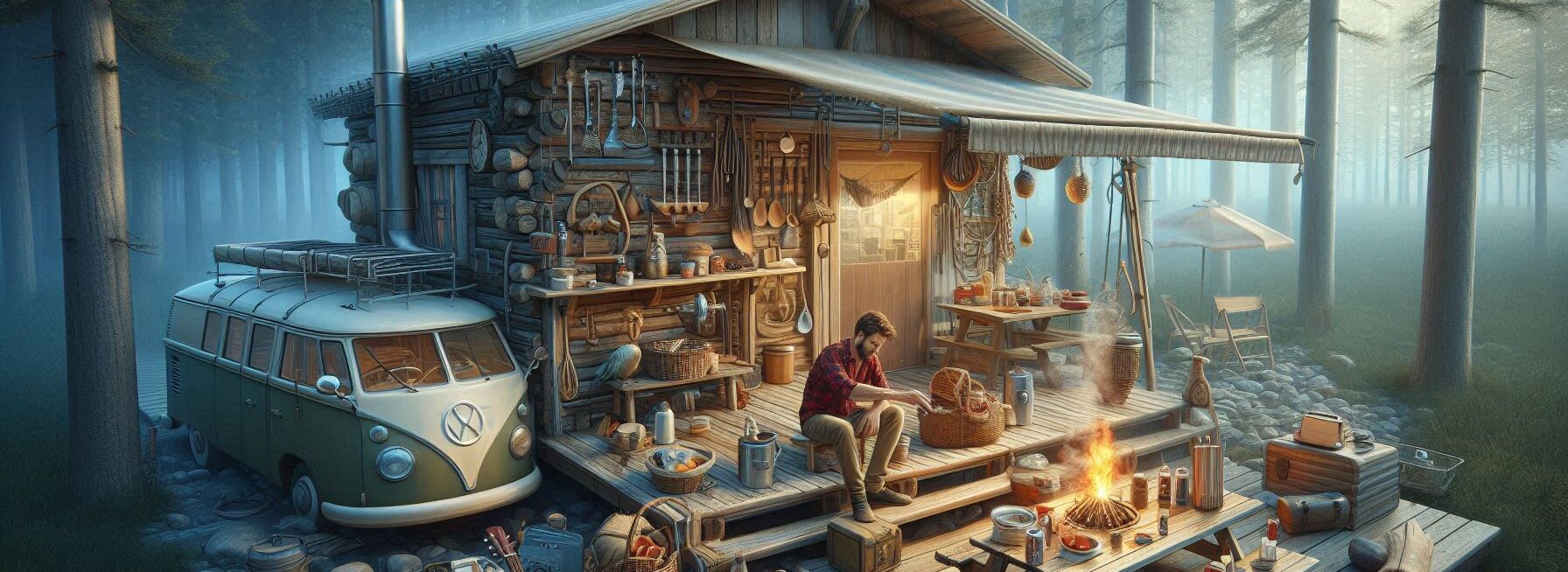Please Note: This post may contain affiliate links. If you click one of them, we may receive a commission at no extra cost to you. As an Amazon Associate, I earn from qualifying purchases.
Last Updated on October 19, 2025 by Kevin Collier

Top Takeaways and Key Concepts
- Gather black containers, clear plastic sheets, insulation, and clean water.
- Place black containers in direct sunlight for maximum heat absorption.
- Cover containers tightly with clear plastic to trap solar heat.
- Insulate around containers to reduce nighttime or weather-related heat loss.
- Clean and adjust your setup regularly for optimal year-round performance.
So, you want to use the sun to power your life? That’s awesome! Seriously, you’re stepping into a whole new world. It’s like you’re not just preparing for anything that comes your way, but you’re also being super kind to our planet. High five for that!
Building a DIY solar heating system can actually be pretty fun. It’s almost like being a kid again, playing with your favorite toys. Imagine your backyard turning into a little science lab. No need for lab coats or those wild experiments. Just you, some sunshine, and a bit of creativity.
You will need a few simple objects, such black pipes or a flat panel. The sun warms them up, and the warm air can assist heat your water or perhaps your house. You feel great knowing that you're employing something as enormous and bright as the sun to benefit yourself.
You could say it's like making lemonade on a hot day. You can mix things together, see how they all come together, and then enjoy the cool results. It could be fun to work on this with friends or family until you get the feel of it. Everyone can help out, and you'll probably have a good time doing it.
You'll feel like a superhero when you see the warm water pouring from your solar system. I mean it. This is more than just staying alive; it's about doing well. It's a significant matter that you're using nature's energy.
Take those small victories. Every step you take on this solar adventure makes you a part of something bigger. You'll make other people want to go on their own eco-adventures. So, fetch those tools and let's get to work! You can do this!
Understanding Solar Heating Basics

First off, let’s clarify what we mean by “solar heating.” Essentially, it’s using sunlight to warm up water or air for your home or outdoor activities. Now, I know what you might be thinking: “But isn’t that just common sense?”
*** Shop for Survival Gear - Tools - Kits ***
Survival Gear - Bags and Backpacks - Knives - Boots/Footwear - Communication
Outdoor Cooking - Gloves - Hydration - Dry Boxes - Water Filtration Systems
Tents - Sleeping Bags - First Aid Kits - Multi-Tools - Flashlights - Fire Starters
Navigation - Survival Food - Night Vision - Headlamps - Stun Guns - Binoculars
Well, yes! But it’s also one of those things that can sound super complicated until you realize it involves some basic principles of physics—and maybe a bit of elbow grease.
By the way, did you know that sunlight is basically free energy? It doesn’t come with hidden fees or annoying subscription services. All you need are some materials and a little bit of creativity. Think about it: how many times have you boiled water over an open fire while camping? If you can do that, then you can definitely create a solar heater!
To be fair, understanding how heat transfer works will make your life easier. There are three main methods: conduction (direct contact), convection (movement through fluids), and radiation (the sun doing its thing). For our purposes, we’ll focus on radiation because that’s where our friend Mr. Sun comes in.
Gathering Your Materials

Now that we’re all scientifically enlightened, let’s gather our materials! Here’s where the fun begins—this is like scavenger hunting but without having to chase down any elusive treasure chests. You’ll need some basic items:
1. Black containers: These could be old buckets or even black-painted barrels—anything dark-colored will absorb heat better than my uncle at a family barbecue.
2. Clear plastic sheets: This will help trap heat inside your container like grandma trapping her famous cookie recipe from being shared.
3. Insulation material: Foam boards or even old blankets can work wonders here; they keep the warmth in instead of letting it escape like my cat when she hears the treat bag crinkle.
4. Water source: You’ll want something to fill those containers with—preferably clean water unless you're going for that “survivalist chic” look with murky puddles.
5. A sunny spot: Seriously—without sunlight, this whole project is as useful as sunglasses at night.
Building Your Solar Heater
Once you've got everything together (and hopefully avoided any unnecessary trips to the hardware store), it's time to build your solar heater! First off, find a sunny location—like your backyard or roof—but avoid areas frequented by squirrels looking for mischief (they're sneaky).
Start by placing your black containers in direct sunlight; they should be arranged so they receive maximum exposure throughout the day without getting overshadowed by trees or buildings—which is really more than I can say for my attempts at sunbathing last summer when I ended up under an umbrella!
Next up, cover these containers with clear plastic sheets tightly secured around them to trap heat inside while allowing sunlight through—think of it as giving them their very own greenhouse effect! Make sure there are no gaps; otherwise, all that precious warmth will escape faster than my motivation on Monday mornings.
Finally, insulate around these containers if possible; use foam boards or blankets to minimize heat loss overnight—or during surprise rain showers when Mother Nature decides she wants in on the action too!
Testing Your Creation
After patiently waiting (or pacing back and forth) for several hours under glorious sunshine—you get to test out your new creation! Fill those black containers with water before placing them outside and check back every hour or so like an excited child waiting for cookies to bake.
Honestly though? Don’t expect boiling hot results right away—it may take time depending on weather conditions and how much sun actually shines down upon us mortals!
To see if things are working well enough for showering after hard days spent hiking outdoors… dip your finger into one container cautiously—you'll either feel blissfully warm water OR experience disappointment akin to biting into what looked like chocolate chip cookies only discover raisins instead!
If successful—and fingers crossed here—you’ll have heated water ready for cleaning dishes after meals cooked over campfires or even warming up post-hike baths (if you're feeling fancy)!
Maintenance Tips for Longevity
Like any good DIY project worth its salt (or lack thereof), maintaining your solar heating system ensures it keeps functioning smoothly long-term. Regularly check connections between components and inspect insulation material since exposure elements might wear things down faster than expected!
And speaking of expectations… don’t forget seasonal changes affect efficiency too! In winter months when daylight hours dwindle dramatically compared summertime brightness levels – consider adjusting positioning slightly towards optimal angles based on sun's path across skies daily!
Also remember routine cleaning helps maximize performance- dust accumulation decreases absorption rates significantly leading toward disappointing outcomes overall… which nobody wants after investing time crafting such ingenious solutions!
Lastly? Enjoy knowing YOU created something beneficial while saving money AND helping planet Earth thrive simultaneously – talk about winning all around folks!!
Conclusion
Creating a DIY solar heating system is a way to stay warm, but it’s also super fun and good for the Earth! You can feel like a hero. Imagine this: instead of just worrying about how to keep warm, you’re having a blast while doing it.
Think about your weekends. Maybe you’re looking for something cool to do outside. Why not try this? Camping trips can be awesome when you have hot water, right? Or just hanging out in your backyard can turn into an exciting project instead of the same old routine.
You don't need anything extravagant. You only need a few simple things, like black plastic pipes and a sunny area. All you need is your imagination! You might even come up with new methods to use what you manufacture. What additional exciting ideas could be out there for you?
Think of this project as a little adventure every time you work on it. You might learn something new or find a cool method to make it better. You might even ask friends or relatives to join in. Having more people around makes things more fun, and everyone can celebrate when it succeeds!
There is adventure all around. When you take on this challenge, you are opening up a world of options. It's not simply about being warm. It's about getting into something fun that makes you feel connected to nature.
Let's get pumped up! Get those things and let your imagination run wild. You might be able to make some very cool things. Believe me, there's an adventure waiting for you just around the bend!
Suggested Resources:
DIY Solar Water Heater
https://www.instructables.com/DIY-Solar-Water-Heater/
How To Build a Solar Hot Water Heater
https://www.motherearthnews.com/diy/build-solar-hot-water-heater-zm0z10zsto
Solar Water Heating Systems
https://www.energy.gov/energysaver/solar-water-heaters

Kevin Collier is a seasoned survivalist and expert in prepping and homesteading, contributing to WiseSurvive.com. With a deep-rooted passion for self-sufficiency and outdoor survival skills, Kevin shares practical advice, strategies, and resources to help individuals prepare for any challenge. His informative articles cover a range of topics, from essential survival techniques to sustainable living practices, empowering readers to thrive in any situation. Whether you're a novice or a seasoned prepper, Kevin's insights will inspire you to take charge of your readiness and build resilience for the future.




